Prostate Gland Pathology
1/41
There's no tags or description
Looks like no tags are added yet.
Name | Mastery | Learn | Test | Matching | Spaced |
|---|
No study sessions yet.
42 Terms
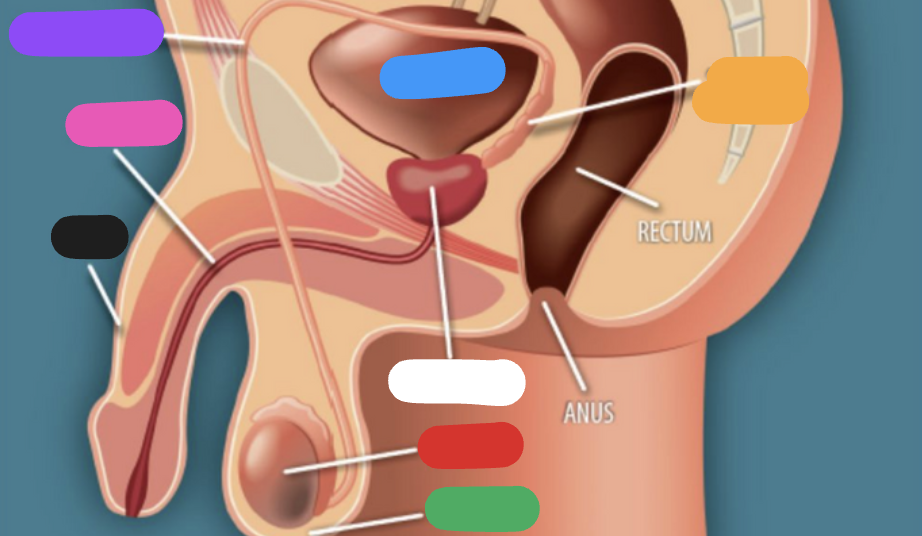
The purple spot represents?
Vas deferens
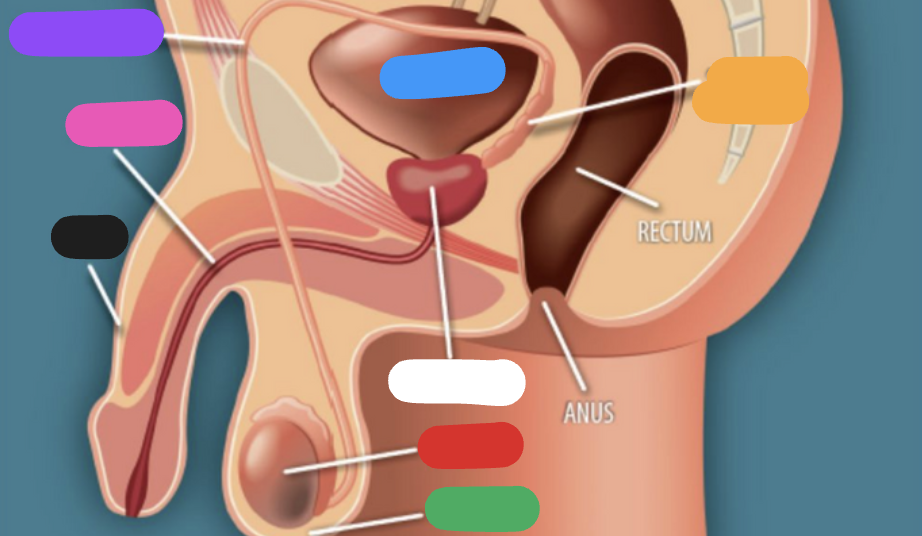
The pink spot is?
Urethra
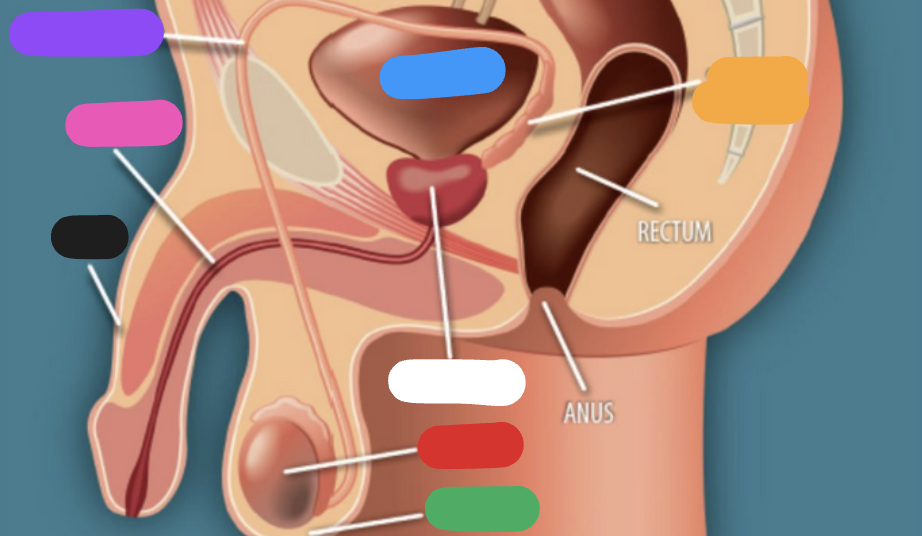
The black spot is?
Penis
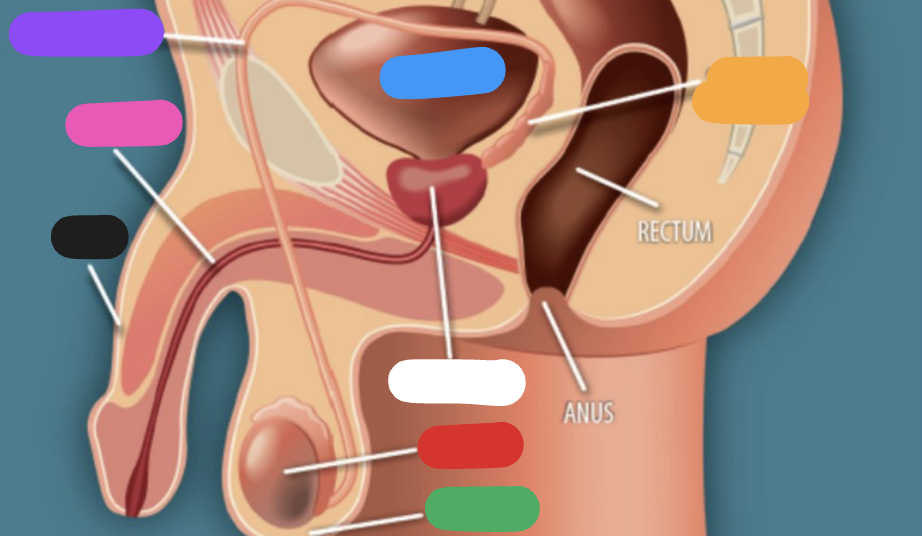
The blue spot represents?
Bladder

The white spot is?
Prostate
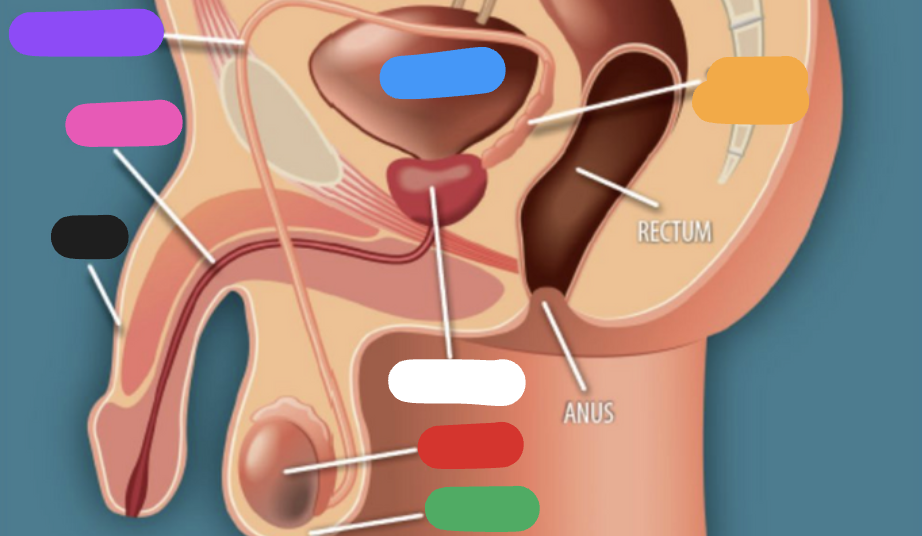
The red spot is?
Testicle
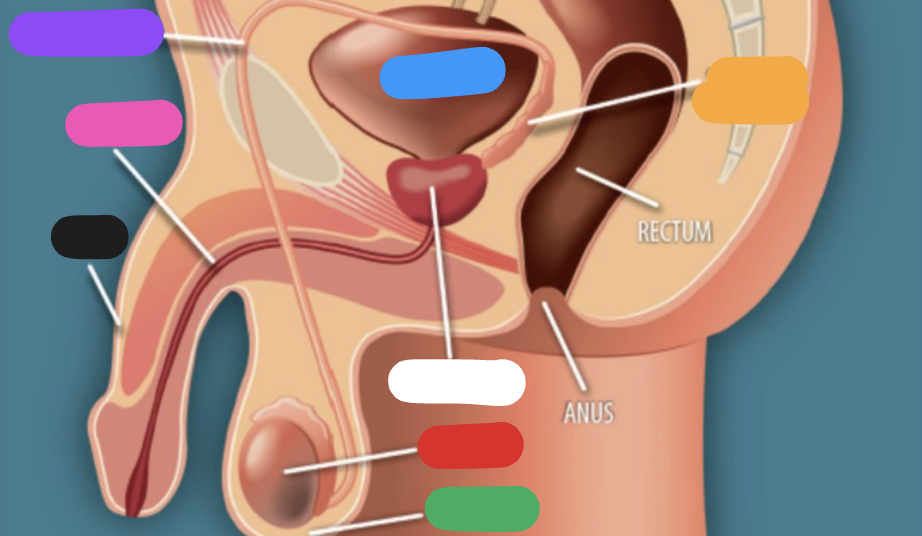
The green spot is?
Scrotum

The orange spot is?
Seminal vesicles
The second most common cancer in men over age 65 is?
Prostate cancer.
What is the largest accessory gland of the male reproductive system?
Prostate
Is the base of the prostate located superiorly or inferiorly?
Superiorly
Is the apex of the prostate located superiorly or inferiorly?
Inferiorly
What is the space between the base & apex of the prostate called?
Mid gland
The base of the prostate includes which zones?
Parts of the peripheral, central, & transitional zones.
The mid gland of the prostate includes which zones?
Mostly peripheral zone & transitional zone.
The apex of the prostate includes which zones?
Mostly peripheral zone & some transitional zone.
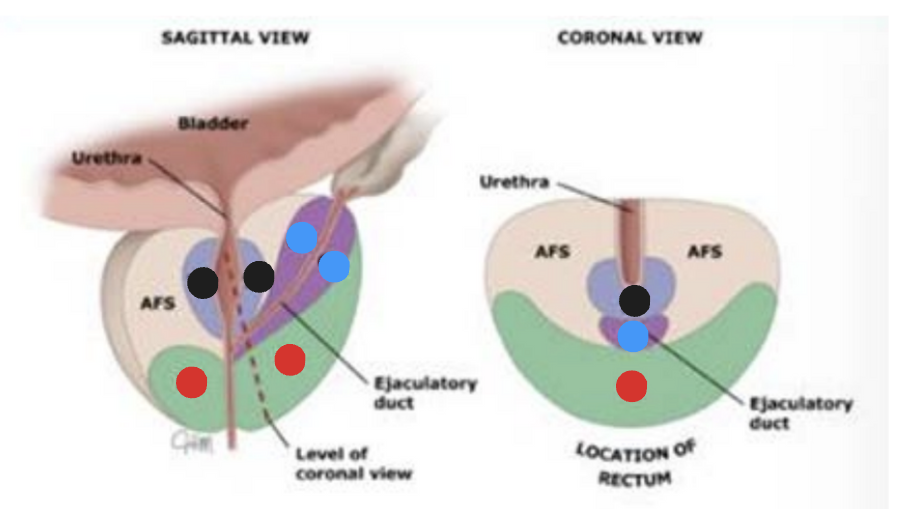
The black spots are?
Transitional zone
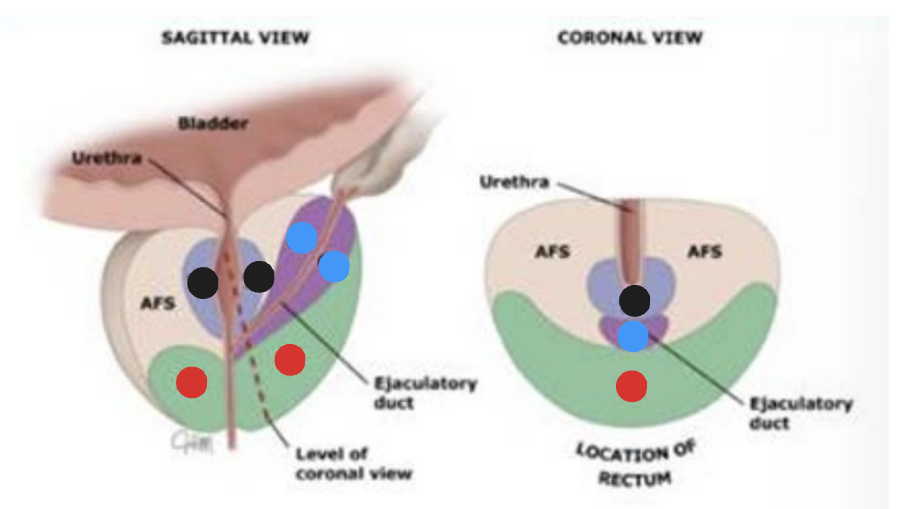
The red spots are?
Peripheral zone
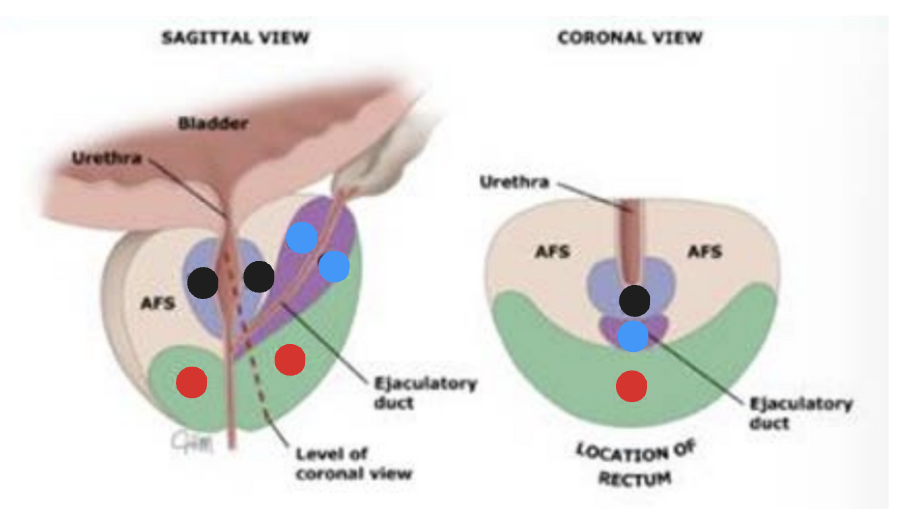
The blue spots are?
Central zone
What is the most common pelvis cyst?
Mullerian Duct Cyst
Mullerian Duct Cysts symptoms include?
Partial urinary obstruction
Low ejaculate volume, infertility
Hematospermia (blood present in semen)
Where are Mullerian Duct Cysts usually located?
Posteriorly between the bladder & rectum.
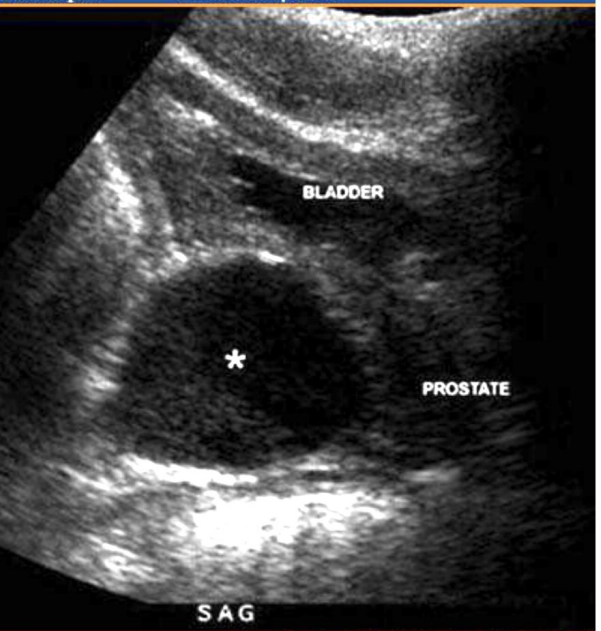
Which type of cyst is shown?
Mullerian Duct Cyst
T or F : Seminial vesicle cysts are common.
False - seminial vesicles are extremely rare with an incidence rate of 0.0005%.

These 2 images are showing?
Seminial vesicle cysts.
What should be done if seminal vesicle cysts are found?
Evaluation of kidneys for renal agenesis (birth defect where a baby is born without one or both kidneys).
T or F : utricle cysts are associated with undescended testicles & renal abnormalities.
True
Utricle cysts are located where in the prostate?
Midline
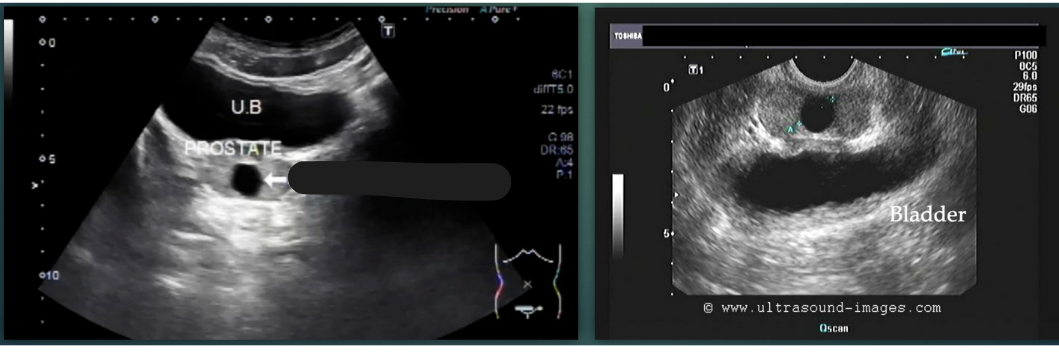
Which type of cyst is shown?
Utricle cyst
What is BPH?
Benign Prostate Hyperplasia. It is a non-cancerous enlargement of the prostate gland.
T or F : BPH is the most common benign tumor found in men?
True
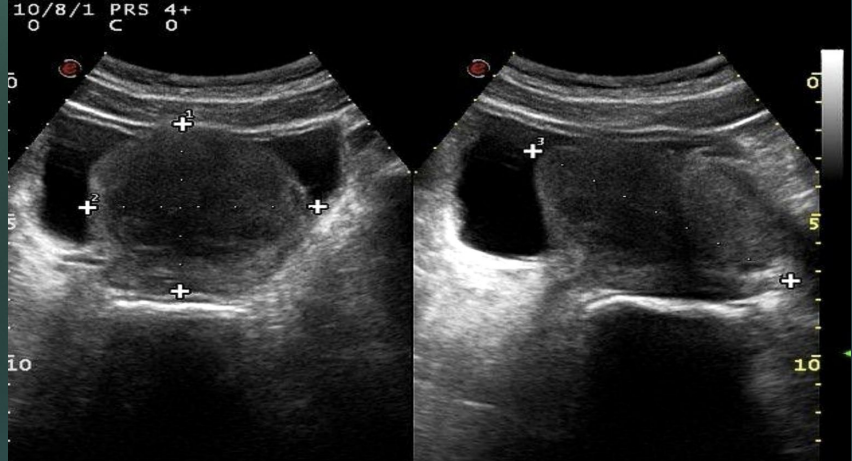
What is the image showing? Give a diagnosis.
Enlarged prostate on the RT image. Dx : BPH.
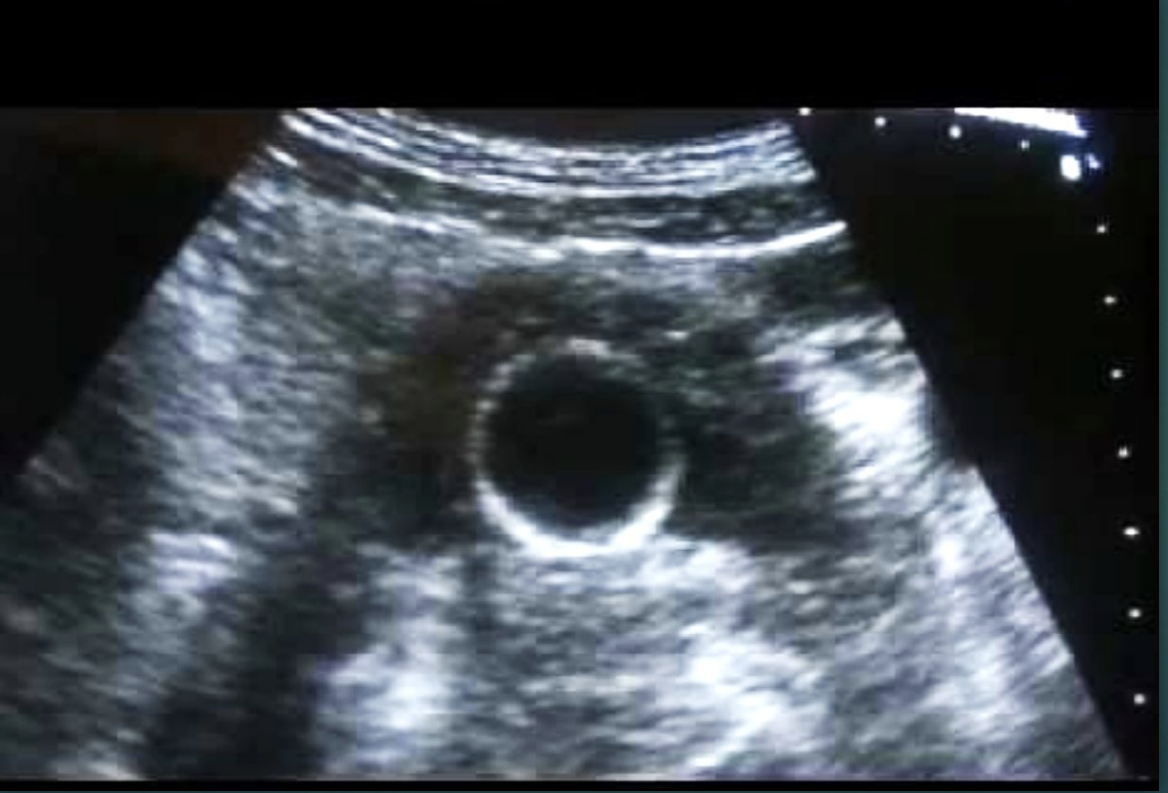
What is shown in this image?
Foley catheter (the enlarged circle in the bladder).
What is TURP?
Transurethral Resection of the Prostate
What is used to treat BPH?
TURP
What is the purpose of TURP?
To resect/cut out obstructing prostate tissue, to treat BPH.
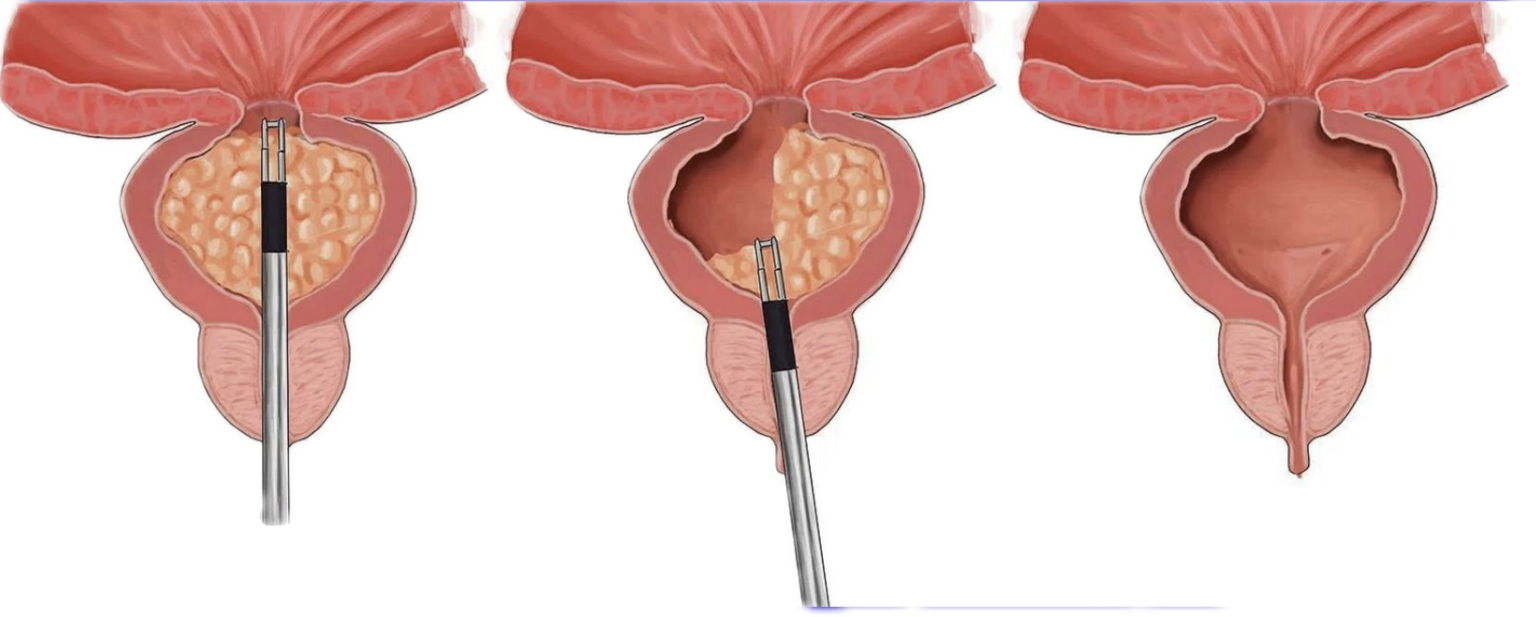
What is being demonstrated in this image?
TURP
What is the most common non-skin cancer in the U.S.?
Prostate cancer.
What is the leading method to screening for prostate cancer?
PSA test
What is PSA?
Prostate-specific antigen. A protein produced by normal & malignant cells of the prostate gland.
The PSA test measures what?
The level of PSA in the blood.

T or F : These images are showing prostate cancer.
True